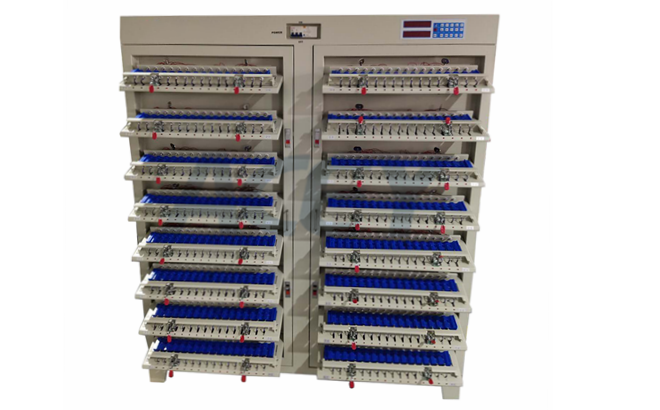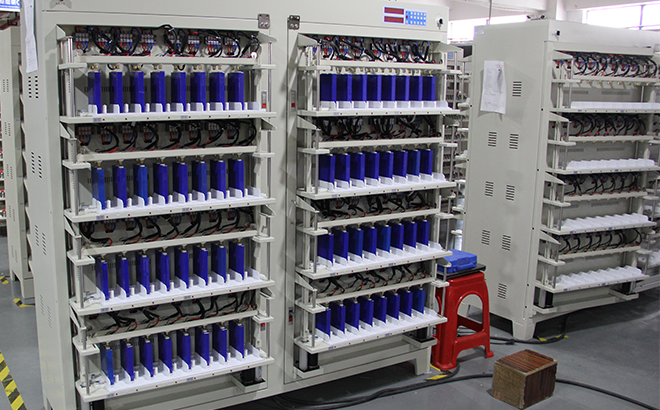Categories
New Blog
How to calculate the charging and discharging time of lithium battery
October 21 , 2021Generally, the capacity of lithium battery testing equipment is divided into constant current charging, constant voltage charging and constant current discharging in the process of testing lithium ion battery charging and discharging.
1. Constant current charging means that the current is always constant and the voltage slowly rises to the set value (the upper limit voltage of the ternary lithium battery is 4.2V). The current for constant current charging is between 0.5C and 1.0C.
2. Constant voltage charging refers to the process in which the voltage of the lithium battery rises to 4.2V, and the current slowly decreases with a constant voltage. The current gradually decreases according to the saturation of the battery, when it decreases to the set cut-off current. (The cut-off current is generally 0.01C of the capacity) It is considered that the charging is over. (C is a way to express the nominal capacity of the battery against the current. For example, if the battery has a capacity of 1000mAh, 1C means that the charging current is 1000mA.)
3. Constant current discharge refers to the process in which the current remains constant and the voltage slowly drops. (The ternary lithium battery has a lower limit voltage of 3.0V)
The relationship between the charging and discharging time of the lithium battery sub-capacity testing equipment and the lithium battery capacity
0.2C calculation formula is as follows: charging time t=battery power c/charging current i
So, suppose the capacity of the battery is 2000MAH, set the charging current to 1000MA, and the theoretical charging time is 2000/400=5 hours
But in practice, the charging time is longer than the theoretical time because of energy loss during charging. Generally, one more hour is added as the constant pressure time.
Constant current discharge time t=battery power c/charging current i
Assuming that the battery capacity is 2000MAH, set the charging current to 400MA, and the theoretical discharging time is 2000/1000=5 hours
0.5C calculation formula is as follows: charging time t=battery power c/charging current i
So, suppose the battery capacity is 2000MAH, set the charging current to 1000MA, and the theoretical charging time is 2000/1000=2 hours
But in practice, the charging time is longer than the theoretical time because of energy loss during charging. Generally, one more hour is added as the constant pressure time.
Constant current discharge time t=battery power c/charging current i
Assuming the battery capacity is 2000MAH, set the charging current to 1000MA, and the theoretical discharging time is 2000/1000=2 hours
1C calculation formula is as follows: charging time t=battery power c/charging current i
So, suppose the capacity of the battery is 2000MAH, set the charging current to 2000MA, and the theoretical charging time is 2000/2000=1 hour
But in practice, the charging time is longer than the theoretical time because of energy loss during charging. Generally, one more hour is added as the constant pressure time.
Constant current discharge time t=battery power c/charging current i
Assuming the battery capacity is 2000MAH, set the charging current to 2000MA, and the theoretical discharging time is 2000/2000=1 hour
The above batteries are based on the voltage range of ternary (lithium cobalt oxide, lithium manganate) lithium batteries as the upper limit of charging 4.2V, and the lower limit of discharge is 3.0V.
The voltage range of lithium iron phosphate battery is the upper limit of charge is 3.65V, and the lower limit of discharge is 2.0V.
The voltage range of lithium titanate battery is that the upper limit of charge is 2.5V and the lower limit of discharge is 1.5V.
Specific circumstances As the capacity of lithium batteries continues to increase, the current of the lithium battery sub-capacity test equipment is often smaller than the battery rated capacity current setting during use, which leads to an increase in the test time and the capacity result will be a little higher than the 1C test.
ACEY provides different channel and different amps cell capacity grading machine, our machine can used for cylindrical cell, pouch cell and prismatic cell.

